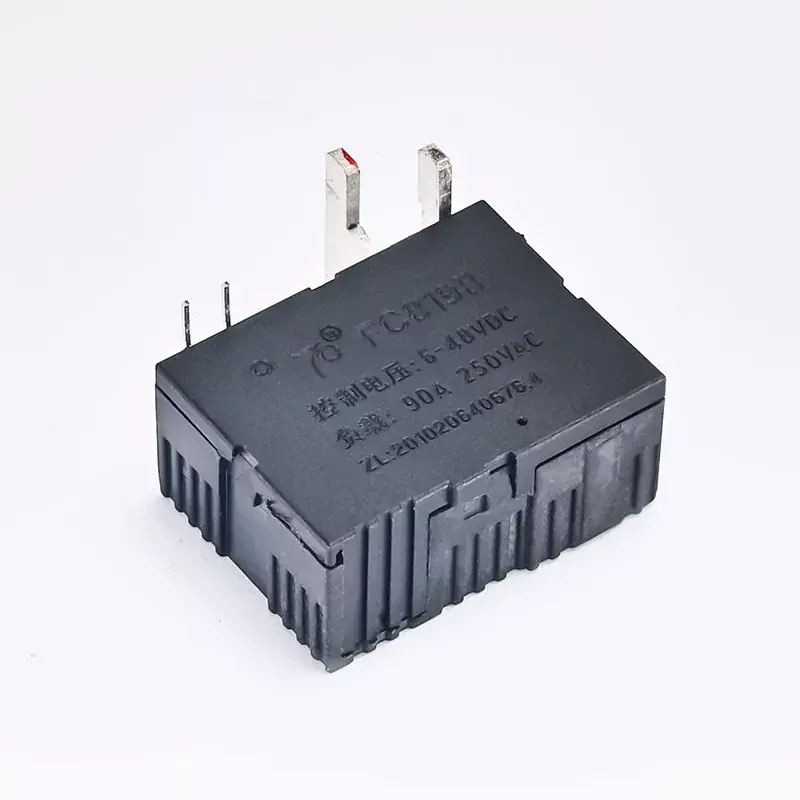The Advantages and Applications of Equipment Control System Latching Relays in Modern Electronics
2025-01-10
As we move toward more energy-efficient, reliable, and durable systems in the world of electronics and automation, the role of relays—especially latching relays—has become even more pronounced. Latching relays, which retain their state without the need for continuous power, are becoming a staple in industries where control, reliability, and energy conservation are of utmost importance.
This blog will dive into the advantages of using Equipment Control System Latching Relays and explore how they benefit modern electronic and automation systems.
1. Energy Efficiency
Latching relays are often called "energy-efficient relays" because they do not require continuous current to maintain their position. Once the relay is switched (set or reset), it stays in its new state without consuming additional energy until another control pulse is applied.
This is a significant advantage in power-sensitive applications. For example, in industrial automation systems, where numerous relays might be used to control motors, lights, or pumps, the use of latching relays can dramatically reduce overall energy consumption. Since the relay only uses energy when changing states (as opposed to traditional relays that constantly draw current to maintain their position), it contributes to the overall energy efficiency of the system.
2. Cost-Effectiveness Over Time
While the initial cost of a latching relay may be slightly higher than a standard relay, the long-term savings in energy consumption and maintenance costs can make latching relays a more cost-effective choice. For instance, in telecommunication systems where relays are continuously switching power lines, using latching relays reduces the power drawn over time, lowering utility costs. Additionally, because latching relays generate less heat and wear out less quickly, they also reduce the need for frequent replacements or repairs, saving on maintenance costs.
3. Improved Reliability in Critical Systems
In mission-critical applications, where failure is not an option, the reliability of components like relays is paramount. Latching relays excel in environments where the relay needs to maintain a stable state even in the absence of continuous input. For example, in aerospace systems or military equipment, the ability to hold a state without requiring constant power ensures that vital components remain in operation over long periods, even during power outages or unstable conditions.
Their ability to operate in harsh environments, resistant to power surges, vibration, and thermal stress, makes latching relays highly reliable in applications that demand high uptime and resilience.
4. Flexibility in Control Systems
Another key advantage of latching relays is their flexibility in control systems. They are ideal for applications where the state of the relay needs to be "remembered" for long periods without continuous power. For example, in automated lighting systems, once the lights are turned on by the relay, the system can "latch" onto that state, keeping the lights on without further energy input. Similarly, in home security systems, once the relay is activated, it can keep the alarm system armed until the next input is received.
This capability to maintain a state makes latching relays suitable for "set-and-forget" systems where operators do not need to constantly monitor or reset the system.
5. Versatility in Different Applications
Latching relays can be used across a wide range of industries. Some of the most common applications include:
- Industrial Automation: Latching relays control motors, sensors, and other machinery, ensuring long-term operation without unnecessary energy consumption.
- Automotive: In vehicles, latching relays control locks, lighting systems, and alarm systems, ensuring optimal power usage and reducing strain on the vehicle's battery.
- Power Systems: For switching power lines, latching relays maintain efficient operation without constantly using energy to hold positions.
- Consumer Electronics: Home automation systems utilize latching relays for controlling appliances, lighting, and heating systems with minimal energy consumption.
6. Enhanced System Security
Latching relays contribute to improved system security. In security systems or access control systems, the relay can lock or unlock doors, maintain alarms in an armed state, or activate backup systems when required. Because the relay remains in its set or reset position without needing continuous control signals, the system is more secure against potential failures, reducing the risk of a system reset due to loss of power or signal disruption.
Equipment Control System Latching Relays offer numerous advantages that make them indispensable for modern systems. Their energy efficiency, reliability, and versatility position them as a superior choice for applications in industrial automation, automotive, power systems, and consumer electronics. As industries continue to focus on sustainability and efficiency, latching relays will play an increasingly important role in optimizing energy consumption while maintaining high performance and reliability.
With their ability to store their state without continuous power and withstand demanding environments, latching relays are undoubtedly a key technology in the future of automation and control systems.



